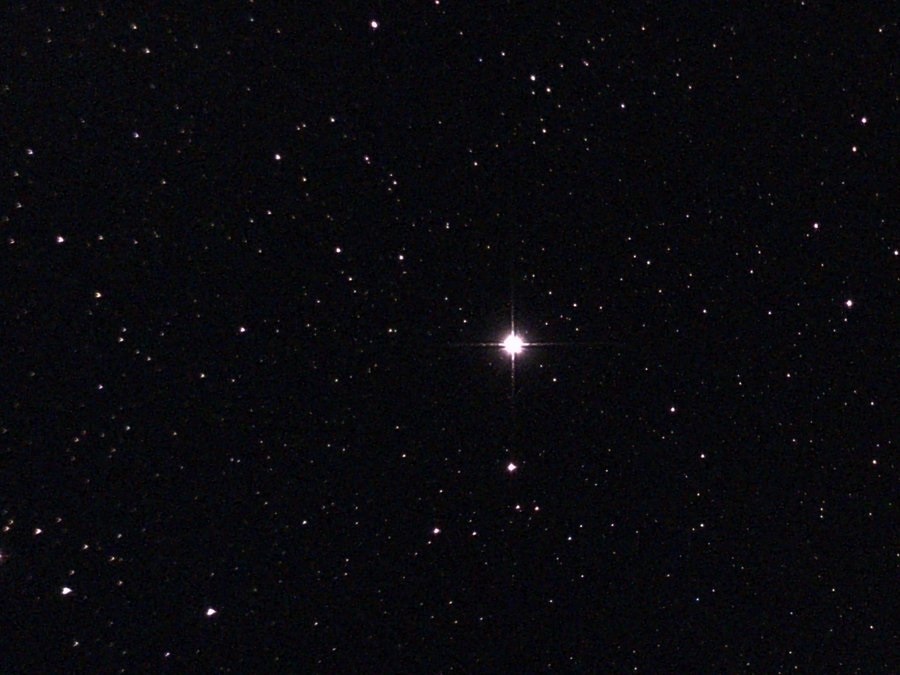The Perseids, a rare eruption of nova RS Ophiuchi and a challenging dawn comet round out an amazing week of skywatching.
It couldn’t have happened at a better time. While we’re all gearing up for the peak of the Perseid meteors this New Moon week on August 12th, two more astronomical events have given us a reason to step outside on warm August nights: the eruption of recurrent nova RS Ophiuchi, and the brief appearance of comet C/2021 O1 Nishimura.

RS Ophiuchi Erupts
First up, is this past weekend’s eruption of RS Ophiuchi. This variable star is a member of a rare class of stars known as recurrent novae, which erupt in a spectacular fashion. T Pyxidis and U Scorpii are members of this same rare club of variable stars. Only 10 recurrent novae have been identified in our galaxy to date: they’re that rare. What you’re seeing is a white dwarf and red giant star in a tight orbital embrace, with the white dwarf siphoning off material from the red dwarf star until in compresses and ignites briefly.

RS Ophiuchi erupted six times in the 20th century, and most recently flared up in 2006. Though it averages an eruption every 20 years or so, its irregular period has seen gaps as brief as nine years. It has topped out at +4 magnitude in the past, and the American Association of Variable Star Observers AAVSO currently lists it at +4.5 magnitude ‘with a bullet’.

Already, the Fermi Gamma Ray Space Telescope has backed up visual observations of RS Ophiuchi, suggesting that an outburst is indeed underway. The American Association of Variable Star Observers now has Alert Notice No. 752 posted for RS Ophiuchi.

With a Right Ascension (R.A.) of 17 hours 50 minutes and a Declination of -6 degrees 42.5 minutes, RS Ophiuchi lies in a corner of the constellation Ophiuchus the Serpent-Bearer, off-set but towards the galactic center. Lying very near the celestial equator, RS Ophiuchi is also well-placed for observers in both hemispheres. It’s three degrees equidistant from the +4th magnitude stars Nu and Mu Ophiuchi, and Zeta Serpentis. The region is high in the east at dusk, giving August observers a splendid opportunity to nab this recurrent nova. Be sure to check it out at dusk this week as a prelude to your Perseid vigil; RS Ophiuchi could not have erupted at a better time.

Comet C/2021 O1 Nishimura Makes Three
As the sky brightens post-Perseid vigil towards dawn, there’s another astronomical target worth hunting for: bashful comet C/2021 O1 Nishimura.
In this modern age of robotic all-sky surveys, this was a rare amateur discovery made by Japanese astronomer Hideo Nishimura on the night of July 21, 2021. Congrats on his first visual discovery!
Comet C/2021 O1 (Nishimura) 2021 july 26 UT 1.40 12″/4 QHY600 Michael Jäger pic.twitter.com/IzGhPruhjK
— Michael Jäger (@Komet123Jager) July 26, 2021
On an orbit most likely millions of years in duration, O1 Nishimura reaches perihelion this week, just inside the orbit of Venus at 0.782 AU from the Sun. It passed just under 1.7 Astronomical Units (AU) from the Earth in early August, though unfortunately, on the opposite side of the inner solar system versus Earth.

If predictions hold true, the comet should top out at +9th magnitude or so this week, though it will be a tricky catch: perihelion is bashful, with the comet just 10 degrees above the eastern horizon at dawn in mid-August as seen from mid-northern latitudes. After this week, the comet will get lost in the glare of the Sun, but may rise again in the dawn in late October through the end of 2021, if it remains bright on its outbound leg. More than likely though, naked eye comet 2021 A1 Leonard will steal the winter show.

Here’s the month-by-month celestial dates with destiny for the brief 2021 apparition of Comet O1 Nishimura:
August
12- Reaches perihelion
17-Crosses into Leo
21-Passes near the +3.9 magnitude star Rasalas (Mu Leonis)
25-Passes near the +3.4 magnitude star Aldhafera (Zeta Leonis)
September
17-Passes into Virgo
25-Passes near the galaxy Messier 49
October
1-May drop back below +10th magnitude
5-Crosses through SOHO’s LASCO C3 field of view until November 2nd.

After this year, Comet C/2021 O1 Nishimura vanishes back out into the icy depths of the solar system, not to return until a distant epoch.
A comet, a nova, and a meteor shower… you couldn’t ask for a better start to August astronomy. Now, if we could just have clear skies…
Lead image credit: Nova RS Ophiuchi (centered) from the night of August 9th. Credit: Greg Redfern

